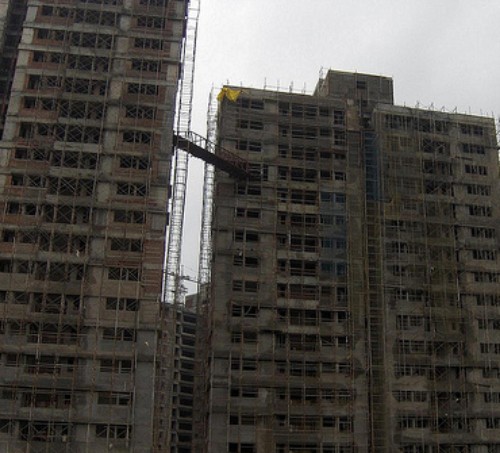While devastating earthquake in Nepal and parts of India, right up to Delhi, has sent a stark natural reminder about following the safe and secure living structures, the growing urbanisation is leading to high growth in the high rise buildings, with Mumbai having the maximum number of buildings with 16-25 floors and upwards.
According to a joint Assocham-DTZ study on “Sky is the limit: High Rise building- safety, Security & Disaster Management”, the average number of floors in commercial high rise buildings of Delhi-NCR, Mumbai and Bengaluru are 6 to 15. In the next higher segments of 16 to 25 floors and 26 to 35 floors, Mumbai has higher number of buildings as compared to Delhi-NCR and Bengaluru.
With the growing urbanization, both commercial and residential segments have witnessed a high growth rate with respect to high rise buildings. The residential segment makes up for ? of the total high rise stock in the three major cities of the country- Delhi-NCR, Mumbai and Bengaluru, reveals the joint study.
Mushrooming growth of high rise buildings has raised new security and safety concerns, especially in the backdrop of the latest devastating tragedy in Nepal and parts of eastern India. “It is a new challenge which must be faced in a holistic manner so that as a nation, we remain alert and well -prepared to brave any natural calamity with minimum or no less,” Assocham Secretary General D S Rawat said in a statement while releasing the study.
Three metro cities of Delhi-NCR, Mumbai and Bengaluru have the highest concentration of high rise buildings and fall under seismic zone IV (high damage risk zone), III (moderate damage risk zone) and II (low damage risk zone) respectively, according the study.
As per the National Building code of India, India is divided into five seismic zones. The zone V is the highest risk zone where earthquakes of having intensity of 9 plus on the Richter scale can take place. Earthquakes of intensity 8 to 9 can be experienced in zone IV whereas earthquake can occur between 6 and 8 on the Richter scale in zone III of India.
“Mumbai has the maximum stock of high rise commercial buildings due to the severe space crunch in the city. The city has no option but to grow vertically to accommodate future urbanization because of lack of open space. The residential high rise buildings have also displayed a similar growth trend to commercial high rises,” adds the study.
Similar to commercial segment, the average number of floors in residential high rise building is 6 to 15 floors. However, residential is also seeing appetite for scaling more heights. Mumbai contributes 75% of total stock of residential buildings with 16 to 25 floors and 91% of total stock of residential buildings with 26 to 35 floors in Delhi-NCR, Mumbai and Bengaluru.
The paper points out that no development is complete without ensuring its safety. What is the point of creating a world class infrastructure without safety and security? Safety of people is of paramount importance as these vertical heights are being achieved and created by them and for them.
Rawat further said, to be better prepared and to mitigate we need a large pool of human resources both in the Government and non-government sectors and there is a great need for effective training and capacity building activities. Besides international best practices, there are several good practices in the country and variety of measures that needs to be shared. Additionally, issues of up-scaling will have to be addressed.
“Not only tier-I but tier II and III cities such as Bhubaneshwar, Chandigarh, Lucknow, Gwalior, jaipur, Nagpur, Meerut, Kochi, Indore, Patna, Gaya, Ranchi and Udaipur are also going vertical especially in the residential space. A large number of IT/ ITES companies are moving to Tier II and III cities in search of cheaper real estate and manpower. This will drive the demand for commercial as well as residential real estate. Most of the builders have launched high rise residential projects in these cities on the back of growing demand,” highlighted the study.
As per the National Building Code of India all high rise buildings should have the following attributes to be earthquake-resistant:
Good Structural Configuration: Its size, shape and structural system carrying loads are such that they ensure a direct and smooth flow of inertia forces to the ground.
Lateral Strength: The maximum lateral (horizontal) force that it can resist is such that the damage induced in it does not result in collapse.
Adequate Stiffness:Its lateral load resisting system is such that the earthquake-induced deformations in it do not damage its contents under low-to-moderate shaking.
Good Ductility: Its capacity to undergo large deformations under severe earthquake shaking even after yielding, is improved by favourable design and detailing strategies.








